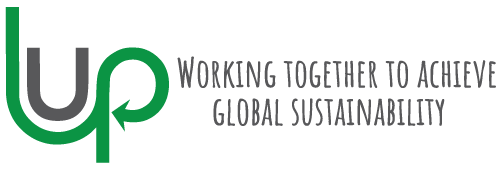Written By: Michael Brown, LUP Global Chairman, and former Group General Manager of Supply Chain at Qantas.
What is Circular Procurement – how can it create value from both an environment and commercial perspective?
The Procurement community is great at engaging in the purchase of NEW – more and more we as a Community need to focus on the increasing opportunity for under-utilised Assets that have not reached their FULL lifecycle potential.
Not many industries proactively engage in ensuring their assets are used to their maximum useable life – Heavy Industry Mining and Aerospace maybe possible exceptions. These Industries with exceptional High Value assets do focus on their MRO (Maintain, Repair, Overhaul) cycle to extract the maximum value from the asset and where possible on sell the assets to other operators for continued use or parts tear down. A mindset shift is required to appreciate the importance of Reuse, Repurpose and then Recycle – this should be the Mantra that Procurement leaders live by in the purchase of Capital Assets.
Why shouldn’t this model apply to other sectors – Health, Food & Beverage and other industries…?? It requires both a structured approach to recording assets throughout their lifecycle and then a mandate within a business to consider USED assets during the Procurement process. What actions do businesses need to engage to increase the potential for on sale of under-utilised equipment?
Fundamentals of Creating an Asset Register
Not to overly state the requirements – depending on the type of asset the following basics ideally need to be observed:
- Purchase Date and Price, Supplier, OEM
- Warranty Provision and any extended warranty arising from a Maintenance action
- Depreciation Schedule
- Maintenance Cycle
- Maintenance Events – activity record
- Machine Usage – hours, events, actions completed
This level of information can be easily loaded into an Excel file. The discipline needed to maintain the register needs accountability within an organization. The quality of the data recorded will enhance the on sale potential and realizable value. To use the example of maximising value on the sale of your car – if you are to on-sell your vehicle a buyer will want to know how it has been maintained and good record keeping of these actions will enhance the sales potential.
Looking Forward
To create more Circularity with Assets we need to open our minds to the fundamentals of reducing both waste and the demand for new resources.
Business leaders need to champion the philosophy of Circular Asset Management and adopt internal policy to encourage processes that can maximise the potential for assets to be Reused, Repurposed and then Recycled. Consideration of the commercial value and risk balance needs to gain appreciation in the importance to use Assets to their life fullness.
With today’s Supply Chains being so badly disrupted we are in a position where all available assets that are under-utilised need to be visible to support the strained needs of our markets – whether that be in the Health field or across industries that need support. With the disruption of COVID-19, new assets and spare parts supply have suffered significant shortages. Under-utilised assets can, if managed appropriatly, be a valuable source to avoid supply disruptions.
As a community we need to collaborate and offer our assets to support areas that might be in need – more and more we believe that LUP Global can assist in the reallocation of critical assets to relieve shortages in Australia and across other countries.

